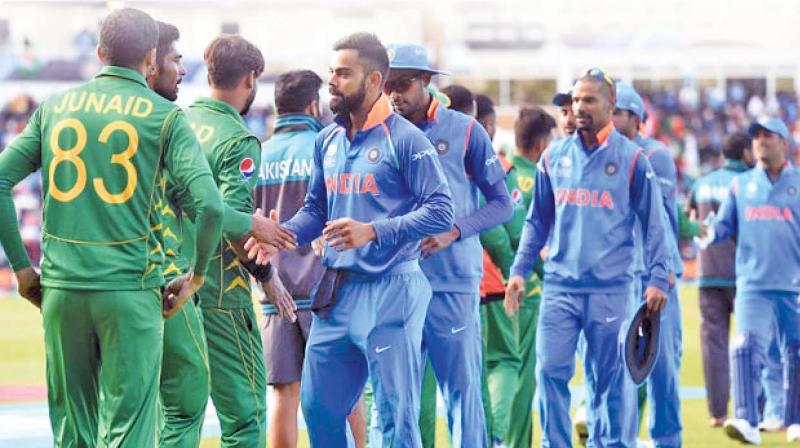Indian cricket system is neighbour’s envy
The IPL has had a huge impact even on first-class cricket in India. With more funds in the ecosystem, players can be paid better.

There was a time when many cricket lovers in India looked at Australia’s Sheffield Shield, the County Championship in England and Wales, and even the Caribbean’s Shell Shield with something approaching envy. As Indian cricket struggled to find its moorings in the international arena, there was a lot of scrutiny of the first-class system. Most were in agreement that it didn’t throw up enough crucible-hardened cricketers ready for the big stage.
How times have changed. During the India-Pakistan World Cup game at Old Trafford last week, Wasim Akram, whose mesmeric left-arm pace won a World Cup final a generation ago, had this to say: “Indian cricket invested everything in their first-class cricket over the years. And we as Pakistan have hardly done anything for our first-class cricket. We have been changing it every year. Our first-class cricket has been run by some random journalist for some odd reason and why for so many years.”
Of course, the argument is a little more nuanced than that. While there is undoubtedly greater strength in depth in India’s domestic cricket these days, the key word in that quote is ‘invested’. Everything becomes easier when you have the resources. The Pakistan Cricket Board now has its own Twenty20 franchise tournament, but with the vast majority of games still played in the United Arab Emirates, it's not likely to deliver the sort of profits that the Indian Premier League (IPL) does any time soon.
The IPL has had a huge impact even on first-class cricket in India. With more funds in the ecosystem, players can be paid better. Also, those that are part of IPL changing rooms get to mingle with the best in the game. The lessons they learn can then be passed on to their teammates at state level. It’s no coincidence that fitness levels, across the board, are immeasurably higher.
At a pre-season conditioning camp 16 years ago, I still recall a trainer pointing to two pace bowlers resting in a corner shirt-less after practice. To say that they weren’t svelte would be an understatement. “What am I supposed to do with those guys?” he asked almost reproachfully. These days, you can’t go through a player’s Instagram account without stumbling across a six-pack. Even the shy boys like Jasprit Bumrah are showing off.
Pakistan’s problems have much deeper roots. Imran Khan, who led them to World Cup glory in 1992 before training his fierce focus on politics, had spoken for years about how inadequate the first-class system was. An abundance of talent papered over the cracks, as did the fact that most of the leading players spent summers playing in England.
By the time India went across the border for that historic tour in 2004, the shiny upholstery had rotted away, exposing the rusted springs and mouldy cushions beneath. For the decisive Test in Rawalpindi, Pakistan called up Fazl-e-Akbar. If you looked at his first-class record, you would have thought he was the next Alec Bedser — 400 wickets at an average of 20.
In truth, those numbers were the result of seasons of playing on seam-friendly pitches in the northern winters. After a Test in which he made next to no impact, one of India’’s great batsmen asked this correspondent with a bemused expression: “He’s the best they can call up right now?” He was probably thinking back to his younger days, when Pakistan’s pace attack could go toe to toe with the mighty West Indies.
India’s cricket administrators have attracted much criticism over the past two decades, for a combination of oversight and arrogance. But they’ve also ensured robust foundations that continue to be built on. The Under-19 and A team programmes provide a proper pathway to the national team, and those emerging players get to play in a variety of conditions around the world. No effort is spared in making sure that they’re best equipped to make the step up.
Ultimately though, it’s no coincidence that the three teams with the greatest resources —India, England and Australia — are well on course for the semi-finals. The Big Three power grab of five years ago may have been watered down subsequently, but with each passing year, the gap between these haves and the have-nots like South Africa and Sri Lanka becomes a yawning chasm. In a country where most sports have been run into the ground by the sheer ineptitude of administrators, AC Muthiah, Jagmohan Dalmiya, N Srinivasan and friends deserve more than a hat-tip. Sometimes, it takes an outsider’s voice to remind us just how good we have it.

